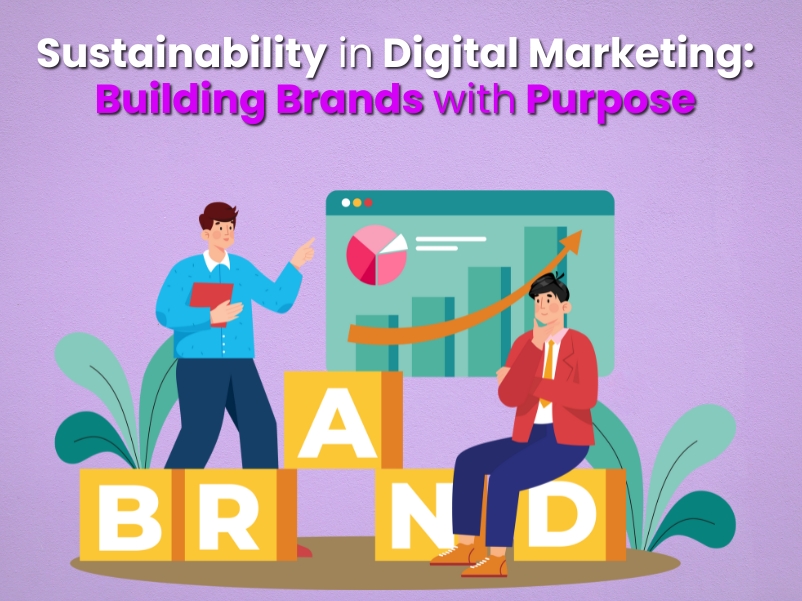Sustainability in Digital Marketing: Building Brands with Purpose
Today’s consumers aren’t just shopping—they’re demanding change. They want to support brands that care about the planet and take action. Sustainability is no longer a feel-good add-on; it’s a business imperative. And in digital marketing, it’s becoming the core of what makes a brand stand out.
Why Sustainability Matters
Brands that align with environmental values foster deeper connections with their audience. Take a moment to think—would you rather buy from a company that treats sustainability as a buzzword or one that makes tangible efforts? Most of us gravitate toward the latter.
In fact, 76% of consumers say they would stop supporting brands that are perceived as environmentally irresponsible. Sustainability isn’t just about good PR anymore; it’s a fundamental way to earn trust and loyalty. Whether it’s reducing carbon emissions, using eco-friendly packaging, or supporting green initiatives, consumers notice these efforts and reward them.
What Does Sustainable Digital Marketing Look Like?
Digital marketing, by nature, can be energy-intensive. From powering websites to running endless ads, it leaves a carbon footprint. But forward-thinking brands are finding ways to go green, and you can too. Here are some strategies:
- Energy-efficient websites: A streamlined website not only enhances user experience but reduces energy consumption. Simple things like reducing the size of images or opting for dark mode can make a big difference.
- Green hosting services: Hosting platforms like GreenGeeks or Kualo offset the energy used by their servers through renewable energy.
- Eco-friendly advertising: Even paid ads can be sustainable. By targeting the right audience and reducing ad wastage, you can reduce the environmental impact of your digital marketing campaigns.
How to Incorporate Sustainability into Your Brand’s Message
It’s not enough to just implement sustainable practices; your audience needs to know about it. But here’s the catch—authenticity is key. Consumers can spot greenwashing from a mile away. So, how can you communicate your sustainability efforts without coming off as performative?
- Transparency: Be honest about what you’re doing, why you’re doing it, and how you’re measuring progress. Don’t exaggerate. If you’re taking small steps, own it! Your audience will appreciate the authenticity.
- Storytelling: Share stories about your journey toward sustainability. Show behind-the-scenes efforts, challenges you’ve faced, and the real impact you’re making.
- Engage your audience: Ask for feedback, run polls, or start conversations about sustainability on your platforms. For example, “Which green initiative would you like to see us focus on next?” This shows your commitment and values your audience’s input.
Brands Doing It Right
Some brands are paving the way in sustainable marketing. Patagonia, for example, is famous for its environmental activism. They’ve run campaigns encouraging customers to buy fewer products and repair what they already have, even offering repair services for their jackets. This might seem counterintuitive, but it builds deep trust and loyalty.
IKEA is another leader, with its mission to become a fully circular business by 2030. They’re not just focused on making sustainable products; they’re educating consumers on how to live more sustainably.
Is Your Brand Ready for the Green Shift?
Sustainability isn’t just a trend—it’s the future. Companies that embrace it now will be the ones that thrive tomorrow. By integrating sustainable practices into your digital marketing strategy, you’re not only doing good for the planet but also building a brand that resonates with the growing number of eco-conscious consumers.
How sustainable is your current digital strategy? Drop a comment below and let’s discuss ways to make it greener!



